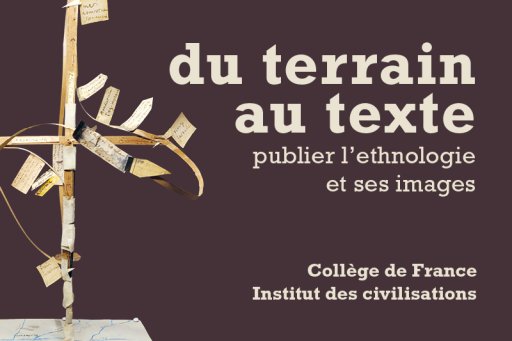The international seminar La République des arts: lettres d'artistes et lettres sur l'art 2017-2018 is dedicated to the memory of two great masters of art history: Paola Barocchi (Florence 1927-2016) and Jacques Thuillier (Vaucouleurs 1928-Paris 2011). They taught us to read artists' letters, the correspondence of art lovers and writers, and that of major collectors, with the aim of contributing to the history of Artistic creation and its reception.
In the age of Humanism, the new social status acquired by artists implied a certain practice of writing. The earliest known letters deal with their creations, daily needs, money or health. From the mid-15thcentury onwards, many architects and master goldsmiths, painters and sculptors wrote - or dictated - letters and maintained correspondence. By the end of the century, most architects and goldsmiths, like many painters and sculptors, could read and write. In Bruges and Florence, Antwerp and Venice, Rome and Paris, Milan, Brussels and Lyon, and in most European lecture halls, artists kept diaries, composed technical treatises, wrote letters, biographies and poems, and sometimes even knew Latin.
Indispensable for the study of history and art history, written mainly in vulgar languages rather than Latin, artists' letters are essential documents for learning about the life and character of creators, their works, and even their most intimate feelings. From the 16th to the 18thcentury , artists' missives have enabled us to gain a better understanding of the social context in which they lived, to reveal their relationships with the authorities and the censorship imposed on their works, and to discover the demands and tastes of their patrons. These documents also tell us about the value attributed to works of art and their reception in different European centers.
From the mid-sixteenthcentury onwards, collections of letters by illustrious men, handwritten or printed, in Latin or in the vernacular, multiplied; they became a transnational literary genre and served as models for private or official correspondence. It is in these collections that artists' letters have been preserved since the 16thcentury , along with their diaries, handwritten treatises, poems and literary descriptions of their works.
In the first edition of the Lives of the Best Painters, Sculptors and Architects (Florence, Torrentino 1550), Giorgio Vasari (1511-1574) methodically used the letters of artists, scholars and patrons to construct his biographies. With Vasari, letters became essential to the social advancement of artists: the King of France wrote to Leonardo da Vinci, Andrea del Sarto and Cellini, the Emperor to Titian, and Raphael replied to the Pope. At the beginning of the modern age, after the death of Michelangelo (1475-1564), painter, sculptor, architect and poet, author of hundreds of letters, the institution of academies supported the privileged status of artists. Thanks to their art and their letters patent, artists definitively emerged from their status as artisans and servants of princes, and were sometimes elevated to the ranks of the nobility.
The international seminar La République des arts: lettres d'artistes et lettres sur l'art focuses on the period 1500-1800, and will be held at the Collège de France over ten sessions. Its aim is to retrace the history of "artistic correspondence", presenting new research and critical readings, as well as discoveries and previously unpublished correspondence. Our cross-disciplinary approach will focus on different aspects of artistic epistolography; we will analyze the history of letter collections, as well as the vicissitudes, choices and methods of publishing the famous Raccolta di lettere sulla pittura, scultura ed architettura composed by Giovanni Gaetano Bottari (1689-1775) and published in Rome between 1754 and 1773.
The project is being carried out in conjunction with other European initiatives, such as the Lettere Artistiche del Settecento Veneziano of the Cini Foundation in Venice, and research by the Memofonte Foundation in Florence.
Two study days will be organized in June 2018 in collaboration with the Department of Art History at the University of Parma. The texts of the conferences will be published.
Francesco Solinas
Senior Lecturer at the Collège de France
République des Savoirs (USR 3608 - CNRS)
Spring 2017 calendar
- Friday, March 24, 2017, 3:00 pm
Collège de France, room 4
Tribute to Jacques Thuiller
Alain Mérot, professor at the University of Paris IV - Sorbonne
Nicolas Poussin epistolier: perspectives and problems
- Friday, April 21, 2017, 3:00 pm
Collège de France, Room 7
Tribute to Paola Barocchi
Donata Levi, Professor at the University of Udine, Director of the Memofonte Foundation, Florence
An unfinished project: the lexicon of Giorgio Vasari's correspondence
Carmelo Occhipinti, Professor, University of Rome II Tor Vergata
The arts at the court of Francis I anddiplomatic correspondence: more on Rosso and Primaticcio
- Friday, May 19, 2017, 3:00 pm
Collège de France, Room 4
Pietro Cesare Marani,Professor at the Politecnico of Milan
Ambitions and weaknesses of genius: Leonardo da Vinci's letters to the princes of his time
Seminar organized by République des Savoirs (USR 3608 - CNRS) with the support of CNRS, Collège de France and École normale supérieure - rue d'Ulm.
Collège de France, 11, place Marcelin Berthelot, 75005 Paris







